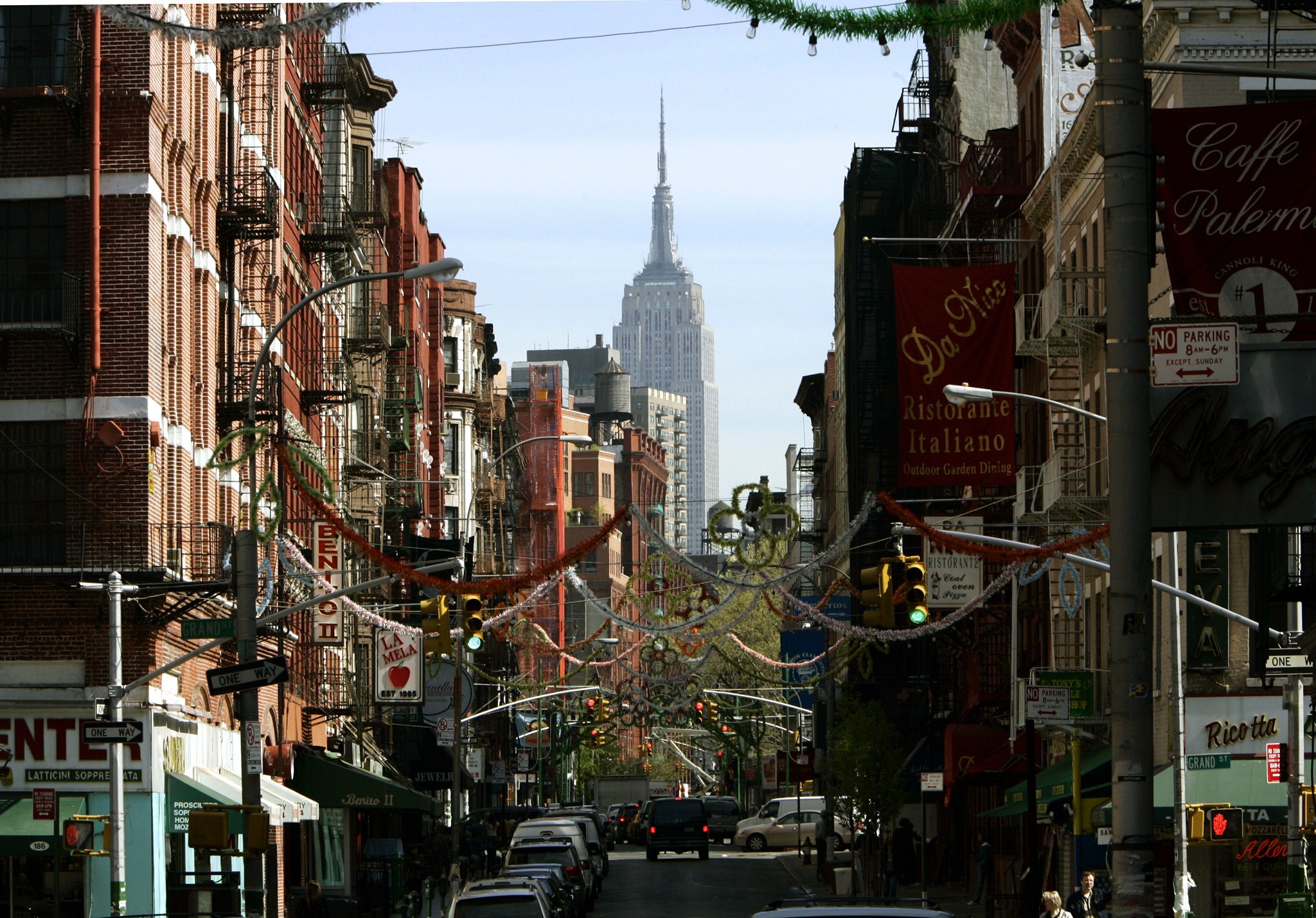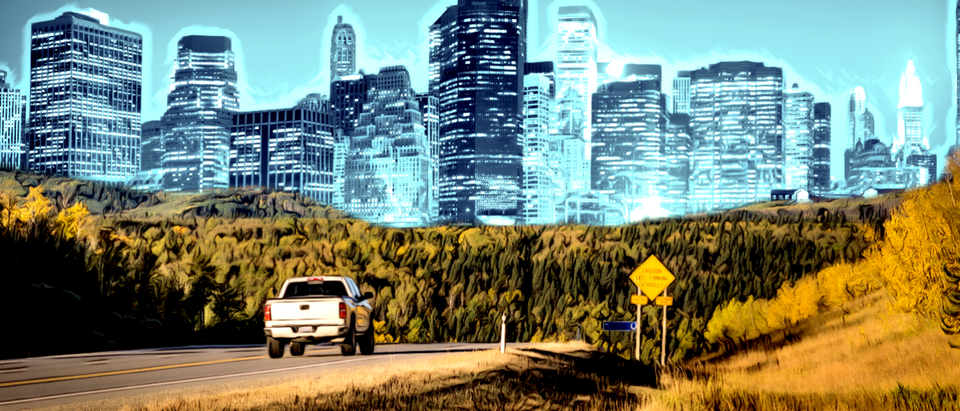The following is an excerpt from “The New Class War: Saving Democracy from the Managerial Elite,” out Tuesday from Penguin Books.
On a map of the United States color-coded by party, big cities and university towns and a few regions with large immigrant and racial minority populations are a chain of Democratic islands in a Republican ocean. Similar patterns appear on maps of voting for Brexit in the UK and elections in continental Europe.
Looking at these maps, it is easy to see why scholars and journalists refer to the “urban-rural divide.” But this is misleading. Farm owners and farmworkers make up only a tiny sliver of the population in the typical Western democracy. Most voters in Europe and North America today live in broadly defined metro areas or small communities on their periphery. In the case of partisanship, the most important border is not between city and countryside, but between expensive, high-density urban business districts and inner suburbs on the one hand and, on the other, low-density suburbs and exurbs.
Rather than use the terms “city” and “countryside,” we can describe the high-density areas as “hubs” and the low-density areas around and between the hubs as “heartlands.”
The hubs and heartlands are distinguished not only by population density but also by different economic sectors. In the hubs, home to most of the managerial overclass, we see two primary sectors: high- end business and professional services, and luxury services. In the heartlands, we find two other sectors: goods production and what can be described as “mass services.” (RELATED: The Real Conflict Is Not Racial Or Sexual, It’s Between The Ascendant Rich Elites And The Rest Of Us)

A rural road leads to a farm on Jan. 16, 2020 in Emmetsburg, Iowa. (Photo by Spencer Platt/Getty Images)
The high-end business and professional services concentrated in the hubs, which Saskia Sassen has called “global cities,” such as New York and London, include software, finance, insurance, accounting, marketing, advertising, consulting, and others whose clients are often corporations, including global corporations managing supply chains in many countries. No matter where they are born, professionals and managers often move to pursue their careers in major hub cities that specialize in particular producer services — software in San Francisco and the Bay Area, finance in New York and London and Frankfurt.
Much of the discretionary income of elite managers and professionals in the hub cities is spent on luxury services. In Europe and North America, these amenities are provided by the sectors that the economist David Autor calls “wealth work,” a category with formal job titles that include Gift Wrapper, Fingernail Former, Mystery Shopper, and Barista. The combination of low wages and high living costs for many workers in hubs like New York, London, and Paris make these occupations unattractive to many native workers of all races, as well as more prosperous immigrants, who often move to suburbs or exurbs as soon as they can afford to escape. Urban service jobs are filled disproportionately by recent immigrants, for whom miserable pay and crowded living conditions in the hubs are preferable to the limited opportunities in the countries they left behind.
The social liberalism of these high-end service meccas cannot disguise their extreme inequality. The gap between richest and poorest in New York City is comparable to that of Swaziland; Los Angeles and Chicago are slightly more egalitarian, comparable to the Dominican Republic and El Salvador.
Meanwhile, in the vast areas of low-density, low-rise residential and commercial zones around and among the hierarchical hubs, a radically different society has evolved. In the national heartlands, apart from expensive rural resort areas, there are fewer rich households and therefore fewer working poor employed by the rich as servants and luxury service providers. (RELATED: Here’s A Look At One Ohio Town Where The Manufacturing Jobs Are Coming Back)
In the U.S. and Europe, the population of the heartlands is much more likely to be native-born and white. But the heartlands are becoming more racially and ethnically diverse, making the familiar equation of “urban” and “nonwhite” anachronistic. For example, most African Americans and Latinos in the U.S. are neither poor nor urban but belong along with most white Americans to the suburban and exurban working class. Over time, the share of the heartland population that is nonwhite or mixed race is growing, as both non-white immigrants and native minority- group members are driven by rising real estate costs out of hub cities that have grown whiter and richer thanks to gentrification. In the United States, immigrants from Latin America are assimilating to mainstream language and culture and marrying outside of their group at a rate similar to that of European immigrants in the past. It is a mistake, therefore, to assume that the hub city ethnic diasporas of today will endure rather than wither away in time as did America’s “Little Italys” and “Little Bohemias.”

The Empire State Building is viewed from Mulberry Street in New York City’s Little Italy. (Photo credit should read TIMOTHY A. CLARY/AFP via Getty Images)
In the heartlands are found almost all of the goods-producing industries that have not been offshored to other countries — factories, farms, mines, and oil and gas wells. In addition to being the realm of goods production, the heart- land is the land of mass services. In the somewhat idealized era of mid-twentieth-century industrial Fordism, the workers in mass-production industries earned enough to buy the products they made, such as cars, radios, and television sets. In the twenty-first century, the workers in mass-provision service industries — waiters at inexpensive chain restaurants with working- class clienteles at exurban highway intersections, for example, unlike waiters at prestigious downtown restaurants — often can afford to purchase the services they provide, in a kind of service-sector Fordism.
In short, the hub-heartland divide that is reshaping politics on both sides of the Atlantic is the geographic manifestation of a class divide. Partisan geographic differences tend to be proxies for class conflicts, with the interests of hub city overclasses and heartland working classes colliding when it comes to environmental policies, trade, immigration, and values.Of all of the self-serving myths that are found in metropolitan overclass propaganda, the most absurd is the idea that the hubs are more “productive” than the heartlands. This makes sense only if productivity is equated with income. By this standard, if all the billionaires in the United States moved to Jackson Hole, Wyoming, the luxury resort community would become the most “productive” area in the U.S. overnight. (RELATED: LORD: Donald Trump’s Country Party)
In reality, affluent investors, managers, and professionals in global hubs like New York, San Francisco, and London are paid for the services or capital they provide to major industries or firms, most of which have physical production or transportation facilities elsewhere. The fortunes of many San Francisco tech executives depend on legions of underpaid factory workers in China and other countries, on energy-hungry server farms located in remote rural areas, and on massive communications and transportation infrastructures stretching over vast distances among cities and nations and maintained by blue-collar workers.
Michael Cembalest of J.P. Morgan Asset Management writes that without U.S. heartland regions, “cities would not be able to grow as they have, and/or the U.S. would be highly reliant on geopolitically insecure and costlier imports of food and energy, and be exposed to volatile weather, environmental and exchange rate conditions out of its control.” As a tongue-in-cheek thought experiment, Cembalest allocated the 538 votes in the electoral college that elects the U.S. president to American states on the basis of two equally weighted factors, their populations and their food and energy production: “Texas, the Midwest and the Rockies gain electors, while East Coast states and Michigan lose them.” Without any irony William Jennings Bryan, the leading agrarian populist of the late nineteenth and early twentieth centuries, would have approved, having declared: “The great cities rest upon our broad and fertile prairies. Burn down your cities and leave our farms, and your cities will spring up again as if by magic; but destroy our farms, and grass will grow in the streets of every city in the country.”

A windfarm is seen 30 December 2006 near Palm Springs, California. Increasingly popular as alternative sources of energy, wind turbine generators are a type of windmill that produces electricity by harnessing the wind. Wind turbine generators are much less harmful to the environment than burning fossil fuels, but they do require average wind speeds of at least 21 km/h (13 mph). (Photo by Gabriel BOUYS / AFP) (Photo credit should read GABRIEL BOUYS/AFP via Getty Images)
Most of the physical production that remains in Western nations, like manufacturing, agriculture, and mining, including fossil fuel extraction, along with infrastructure construction and upkeep, occur far from the fashionable downtowns and affluent, inner-ring suburbs where most of the managerial overclass lives and works. Overclass elites in urban hubs therefore can favor stringent environmental regulations at little cost to themselves. Heartland communities are more likely to be sensitive to the costs of environmental policies than hub city managers and professionals. What is more, the property-owning, working-class majorities of the heartlands are also likely to be more sensitive to environmental restrictions on what property owners can do with their property than the denizens of the hubs, where not only the working poor and the working class but also many professionals must rent be- cause they cannot afford to own homes. And most working-class individuals in low-density regions rely on their personal cars or trucks for commuting, shopping, and recreation.
The French yellow vest riots of the winter of 2018–19 illustrated the intersecting fault lines of class and place in environmental policy. Although France is responsible for only a negligible amount of global greenhouse gas emissions, in order to advertise France’s moral leadership in combating global warming, President Macron’s government raised taxes on diesel-fueled cars and trucks. The costs of this exercise in virtue signaling fell disproportionately on working- class and rural citizens, dependent on their automobiles and trucks. Their spontaneous protests escalated into months of violence in Paris and other French cities, forcing Macron’s government to abandon the policy.9 Subsequently in 2019 the conservative party in Australia, based in low-density working-class areas, came from behind and defeated a progressive party that pushed environmental regulations that threatened jobs and low living costs in the periphery. (RELATED: Josh Hawley’s Common-Good Conservatism Isn’t Just Right, It Can Win)

Image courtesy of Penguin Books
Like debates about the environment, debates about trade are battlefields in the class war. The overclass population living in hubs continues to tout the benefits of trade liberalization among high-wage and low-wage countries, including slightly lower prices for consumers for imports from low-wage nations, but much of the Western working class is no longer listening. As manufacturing jobs disappear overseas, disproportionately affecting the livelihoods of the working class in the heartland, more and more disaffected Americans look to leaders who promise to change the trade balance, economic orthodoxy be damned. In 2016, according to the economists David Autor, David Dorn, Gordon Hanson, and Kaveh Majlesi, voters in U.S. regions exposed to Chinese import competition were more likely than others to support the outsider candidacies of Donald Trump and Bernie Sanders: “ Trade-exposed [congressional] districts with an initial majority white population or initially in Republican hands became substantially more likely to elect a conservative Republican, while trade-exposed districts with an initial majority- minority population or initially in Democratic hands also became more likely to elect a liberal Democrat. In presidential elections, counties with greater trade exposure shifted towards the Republican candidate.”
The overclass most important in the hubs of and the the many native divisions working- between class voters in the heartland is the clash over immigration policy. Like trade policy in today’s era of transnational production, immigration policy is essentially labor policy. Immigration has always been a flash point in the class war between employers and workers. Members of the mostly white overclass elite in the U.S. often personally benefit from lax enforcement of immigration laws. The Pew Research Center reports that in the U.S., immigrants make up nearly half of all household servants, who are employed by a relatively small number of affluent households. As Lynn Stuart Parramore writes for the left- leaning Alter Net, “In the U.S., nearly half of maids and housekeepers are not native-born, with Latin Americans dominating. (A big chunk of the wealthy is happy to support mass immigration of cheap labor so that these workers can continue to be underpaid.)”

Activists, including childcare providers, parents and their children, protest against the Trump administrations recent family detention and separation policies for migrants along the southern border, near the New York offices of U.S. Immigration and Customs Enforcement (ICE), July 18, 2018 in New York City. On Wednesday, the GOP-led House of Representatives passed a resolution supporting ICE and denounced calls by some Democrats and progressive activists to abolish ICE. (Photo by Drew Angerer/Getty Images)
The adoption by many U.S. hub cities of seemingly idealistic “sanctuary city” laws, which forbid local law enforcement officers from collaborating with federal officials in identifying and deporting illegal immigrants, saves money for managers and professionals by maintaining their access to local pools of low-wage, untaxed, unregulated, off-the-books nannies, as well as other luxury service labor that allows college-educated professionals to maintain their privileged lifestyles. By one estimate, 90 percent of nannies in New York City are paid off the books by employers who ignore employment rules and tax laws.
High levels of immigration, both legal and illegal, also maintain the populations and economies and real estate prices of overclass-dominated hubs. Fore decades, there has been a net outflow of U.S. citizens moving out of unaffordable big cities like New York, San Francisco, and Los Angeles and their counterparts in Europe. If international migration had not compensated for the exodus of natives from the 1970s onward, New York City would have lost population and its property tax base would have shrunk by $500 billion over thirty years. (RELATED: There Are Now More Overdose Deaths In Major Cities Than In Rural Areas)
Absent perpetual repopulation from abroad, cities like New York, San Francisco, London, and Paris might go into demographic and economic death spirals. Luxury industries, including tourist businesses, might cost more in a tight labor market, while urban real estate prices might tumble, with disastrous consequences for the wealth of local elites. At the same time, the flight of natives from the hubs might accelerate further if two-earner professional couples had to pay higher wages to their servants.
In contrast, curtailing low-wage immigration from abroad would not harm and in some cases might help the working classes employed by the production industries and the mass service industries of the national heartlands in America and Europe. Few of them can afford foreign-born nannies, maids, and gardeners. And if tighter labor markets allow waiters at suburban chain restaurants to earn more, they can also spend more, not only on mass-produced services but also on mass-produced goods like those at the discount furniture outlet at the highway intersection. Tighter labor markets would make it easier for exploited urban immigrants to demand higher wages from miserly employers as well.
“The New Class War: Saving Democracy from the Managerial Elite” by Michael Lind will be published on Jan. 21 by Portfolio, an imprint of Penguin Publishing Group, a division of Penguin Random House, LLC. © 2020 by Michael Lind.
The views and opinions expressed in this commentary are those of the author and do not reflect the official position of the Daily Caller News Foundation.
All content created by the Daily Caller News Foundation, an independent and nonpartisan newswire service, is available without charge to any legitimate news publisher that can provide a large audience. All republished articles must include our logo, our reporter’s byline and their DCNF affiliation. For any questions about our guidelines or partnering with us, please contact licensing@dailycallernewsfoundation.org.


